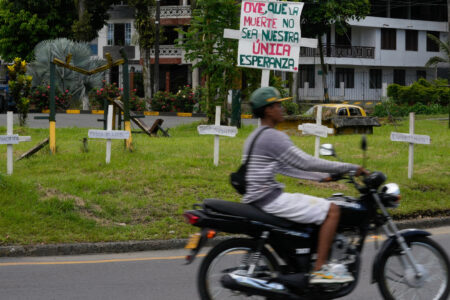
Family physicians are trained to ask patients how their social circumstances affect their health. For our more socially vulnerable patients, one of the questions we now find ourselves asking is how COVID-19 has affected their ability to access basic needs such as food, housing and medicines.
Socially vulnerable patients are more likely to delay seeking care. Their chronic conditions may worsen, or they may be unable to afford medications because of COVID-19. This could lead to another type of COVID-related surge: that of increased morbidity due to chronic disease exacerbations.
Patients who are socially vulnerable already have difficulty making ends meet. They also disproportionately suffer from chronic medical illnesses. It’s a well-studied paradigm: as your income decreases, rates of chronic disease like hypertension, heart disease and diabetes go up. As news emerges that we have so far avoided the dreaded acute surge of COVID-19 patients in Canada, it is this complex patient population that many of us are increasingly concerned about.
There are patients like Divya, whose name has been changed to protect her identity. She is a 40-something year old single woman living in downtown Toronto. She receives assistance from the Ontario Disability Support Program (ODSP) and earns the rest of her income as a part-time street food vendor. She doesn’t qualify for the Canada Emergency Care Benefit (CERB), and since the pandemic, she has seen her nominal income decrease even further. She experiences chronic debilitating nerve pain, and when told she would need another diabetes medication, she said that she simply couldn’t afford it.
Then there’s Joseph (whose name has also been changed to protect his identity), a truck driver on Ontario Works (OW) who does qualify for the CERB but is worried that anything he gets will be “clawed back” as additional income if reported. He is also a case study in many of the major risk factors for heart disease. He has poorly controlled high blood pressure, diabetes and high cholesterol.
During a recent virtual visit with his doctor, Joseph disclosed that he had had chest pain the evening before that made him unable to sleep. He never went to the emergency department, too worried about COVID-19 to risk stepping foot in a hospital.
The Ontario government announced on April 20 that individuals on social assistance who qualify for the CERB will be able to keep just over half of the $2,000 per month they can expect to receive. For the approximately 34,000 Canadians who fall into this category, this is welcome progress. However, there are still large groups of our patients who are at risk of being left behind.
For instance, individuals on social assistance who don’t qualify for CERB (for example, those who made less than the requisite $5,000 per year or were unemployed before COVID-19 hit) remain poorly supported. Recipients of ODSP or OW have access only to a one-time $100 benefit (or $200 for families of two or more) and they must justify their need for additional funds and explain how they’ll use them on COVID-related expenses. The 1.1 million Canadians who were unemployed before the pandemic and were not on social assistance have no additional support in place at all.
These patchwork regulations make navigating the social assistance system needlessly difficult. They will likely also lead to increased healthcare costs later for the patients we’re seeing whose medications and travel expenses related to seeking care have now become unaffordable.
The government has stated that the approximate $30 million it can expect from the CERB claw backs will be reinvested in social assistance. What is needed is a universal approach to income support that will safeguard our patients’ health during this challenging time.
Our approach could take after the model in British Columbia. There, everyone who qualifies can expect to keep all of their CERB funding in full and each individual on a social assistance program is receiving an automatic additional $300 per month, with no stipulations and no need to justify why the additional funding is being requested. It’s a simplified approach to income support that lessens the burden on both patient and provider.
Now more than ever, caring for our community needs to be a collaborative effort with robust, supportive social policy linked to a pro-active healthcare system. A compassionate approach to social policy will amount to both decreased healthcare costs later and a healthier society more capable of readjusting to “normal” life when it resumes.
This article is part of the The Coronavirus Pandemic: Canada’s Response special feature.
Photo: Shutterstock.com, by wutzkohphoto







